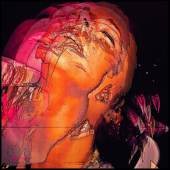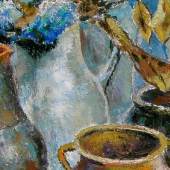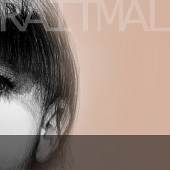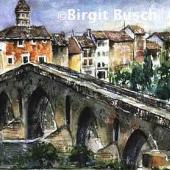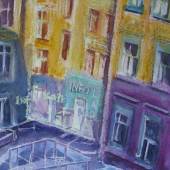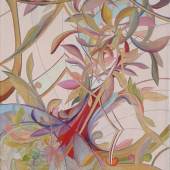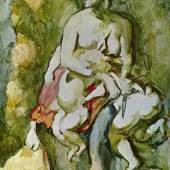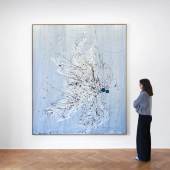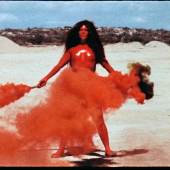Fondazione Giorgio Cini
Expanded Horizons: American Art in the 70s
-
Ausstellung21.09.2024 - 25.01.2025
Group exhibition Carl Andre Joan Brown Rosemarie Castoro John Chamberlain Judy Chicago Dan Flavin Sam Gilliam David Hammons Donald Judd Alex Katz Sol LeWitt Mary Lovelace O’Neal Senga Nengudi Irving Penn Robert Rauschenberg James Rosenquist Robert Ryman Joan Snyder Frank Stella Andy Warhol
Assembling major works by 20 of the most influential artists working in the United States of America in the 1970s, Expanded Horizons: American Art in the 70s retraces the radical artistic developments of this tumultuous decade. Bringing into conversation works across mediums that challenged the limits and expanded the horizons of artmaking, whether in scale, material, or subject matter, this landmark exhibition at Thaddaeus Ropac Paris Pantin encourages a re-examination of an often overlooked decade, and reflects on how the pioneering artists working during it interrogated and redefined contemporary conceptions of art.
In the United States of America, the ‘counter-cultural’ 1960s came to a close amidst socio-political unrest – protests against the Vietnam War, the climax of the Civil Rights movement, and an ever-accelerating rhythm of technological breakthroughs – and the dawn of the 70s was marked by upheaval and transformation. This was reflected by a search for new beginnings among artists of the New York scene, many of whom left the city and set up studios elsewhere: in 1970, Robert Rauschenberg (1925–2008) moved to Captiva, Florida and Mary Lovelace O’Neal (b. 1942) to California, and the following year, James Rosenquist (1933–2017) relocated to Florida and Donald Judd (1928–94) set up his studio in Marfa, Texas. This exodus provided these artists with larger studio spaces that allowed them to scale up their practices in the image of their new open-skied surroundings.
I moved to California; I was sort of a part of that westward migration of flower children. I mean, I wasn’t interested in their thing, but with the upheavals at Columbia, I decided, I don’t have to be in this, I’m not going to jail. Tear the school down, I don’t care. Coming to the Bay Area, I immediately noticed the light out here. There could be these huge black, black, black spaces of flatness in the sky and then there would be a shot of light breaking through there.
— Mary Lovelace O’Neal
Many of the works on view harness monumental scale and three-dimensional space to create art that functions as immersion. Among them is Bank Job (1979), a work from Rauschenberg’s Spread series, which, the artist explains, ‘means as far as I can make it stretch, and land (like a farmer’s ‘spread’)’. Made up of 15 panels, the work is one of the largest the artist ever produced. For Judd, who had abandoned the canvas entirely to work directly in ‘real space’, the transition to working in three dimensions liberated him from the pictorial conventions that working on canvas tied him to. ‘Actual space is intrinsically more powerful and specific than paint on a flat surface,’ he wrote in his 1964 essay ‘Specific Objects’.
James Rosenquist’s monumental 1970 installation Horizon Home Sweet Home takes the form of a ‘room’, made up of 27 distinct panels, which fills intermittently with knee-high fog. This fog is an ephemeral yet integral part of the installation and its presentation, enveloping its lower half like a cloud, disorienting the viewer and challenging or unsettling their assumptions about where a horizon line might fall on the panels. ‘It was an extension of my concept of dissolving the painting as an object, immersing the viewer in the painting, and making it an environment’, explained the artist. The curve of the monumental Break in the Middle (1970) by Rosemarie Castoro (1939–2015), meanwhile, fills out one corner of the Pantin gallery, transforming the way the visitor understands the space. A Sol LeWitt (1928–2007) Wall Drawing, meanwhile, intervenes in the space on an even more fundamental level, being executed on the gallery wall itself following the conceptual artist’s instructions.
This widening of the field in which art could be created and displayed, stemming from a desire for a deeper, more visceral connection to the world beyond the gallery wall, was taken further by Judy Chicago (b. 1939), whose pioneering video performances created outdoors rejected the traditional modes of exhibition and commodification of art. Her 1971–1972 video work Women and Smoke, California, which immortalises a pyrotechnic performance in the California desert, also speaks to contemporary feminist concerns – Chicago enveloped the landscape in a haze of coloured smoke to ‘soften that macho Land Art scene’ – as well as to the emerging ecological movement: temporarily filling and ‘reclaiming’ the landscape rather than altering or damaging it, in contrast with the interventions of the major male figures of the Land Art movement. An exhibition of Chicago’s work is currently on view at LUMA Arles, France, until 29 September 2024.
Also on view are two Drape paintings by Sam Gilliam (1933–2022): acrylic-painted unstretched canvases that are draped from the wall, forming natural folds to give the traditional support an unprecedented sense of movement and depth. Leading the way in the movement to free the canvas from the stretcher, the works from this significant series enter into conversation with the surrounding space, as does the hanging piece by Joan Brown (1938–90), whose rectangular form is turned on its side and suspended by its four corners from the ceiling, revising the traditional codes of the canvas.
-
Wo Sie die Werke Cézannes besichtigen können: Kunsthaus, Zürich „Das...
-
18.05.2024 - 20.07.2025Created in the artist’s studio north of Salzburg, this new series of paintings and ink...
-
21.09.2024 - 25.01.2025Group exhibition Carl Andre Joan Brown Rosemarie Castoro John Chamberlain Judy Chicago Dan Flavin...
-
21.09.2024 - 25.01.2025Carl Andre Mary Lovelace O’Neal Joan Brown Robert Morris Rosemarie Castoro Senga Nengudi...
-
28.11.2024 - 05.02.2025Marking Joan Snyder’s first solo exhibition with the gallery, Body & Soul is...
-
21.09.2024 - 25.01.2025
Tuesday—Saturday, 10am—6pm.
